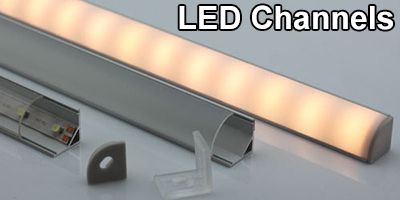Hi guys,
For a number of reasons I have elected to stay clear of discussing lights in the works. There is no telling how or when the vapor will actually materialize.
I have a new light that I have been working on for a good number of months now and it is past the vapor state.
I have been given some deserved flak about the naming of my various lights and it sure gets confusing for everyone, especially me.
This new light has a simple and hopefully unique (for flashlights) name. It's called the Haiku. I wanted a name that somehow alluded to the three levels and I also wanted to give recognition to the Japanese designer of the 3 speed converter which is at the heart of this light. The English version of Haiku is a three line poem that is quite limited in words and yet hopefully accomplishes that which it sets out to illuminate.
The Ti Haiku is a simple light with three levels of output and hopefully it provides the illumination required of it.
The Titanium Haiku is a 1 x CR123 powered flashlight. The Light Engine is a "three speed" Buck/Boost converter driving a Cree XR-E LED (Q5WG bin). The three drive levels are approximately 25, 125 & 650 mA to the LED with typical out the front flux (lumens) of 4, 30 & 135 respectively.
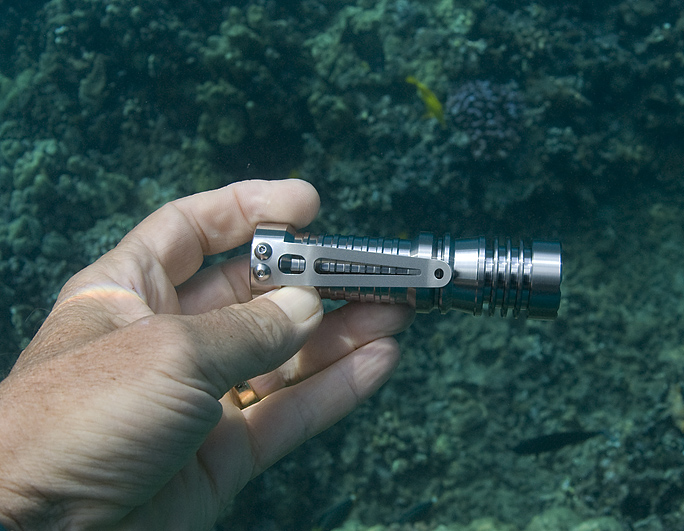
The anatomy of the Haiku:
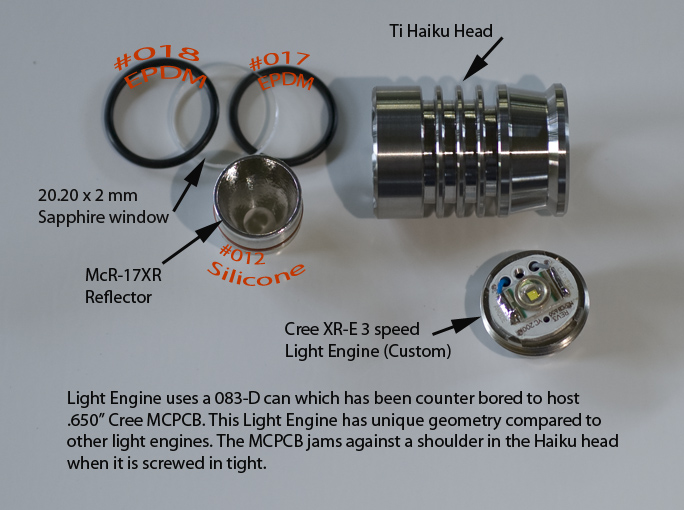
The battery pak of the Haiku is the titanium McClickie pak which many of you are already familiar with:
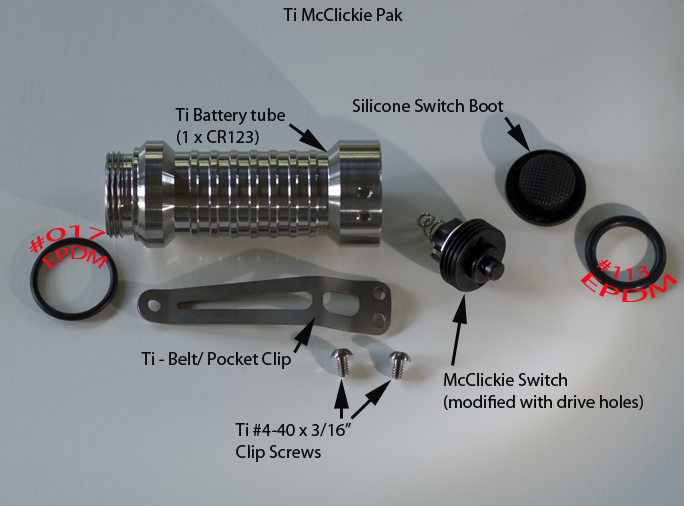
I have been real happy with the SunDrop 3S and I knew I wanted to use the 3S converter in a more "main stream" beam type flashlight. I personally have a strong preference for the XR reflectors coupled with the Cree XR-E LED's and the Haiku was a rather predictable result in design. I like the PD-S mizer but recognized with a 3 speed converter, I could have a mizer configuration and in addition, a turbo or bright mode on top. I think the dynamic range of the three levels is better suited to the XR reflector than the McR-20S coupled with a Seoul LED.
I did some runtime tests on a production sample Haiku:
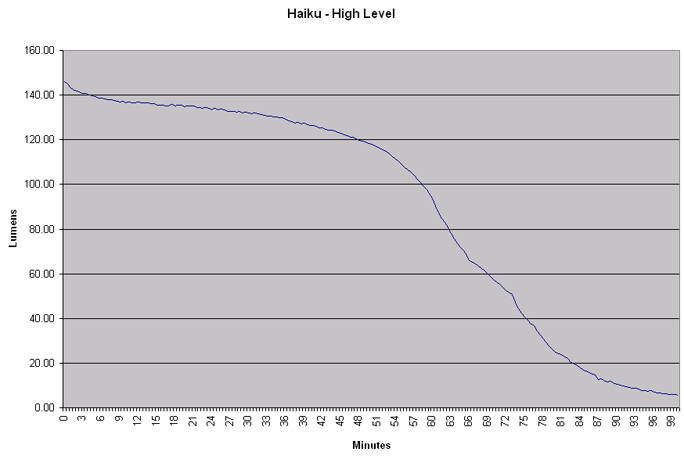
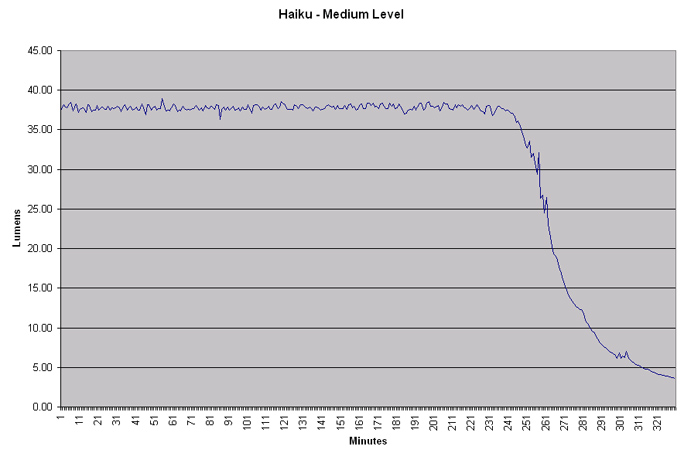
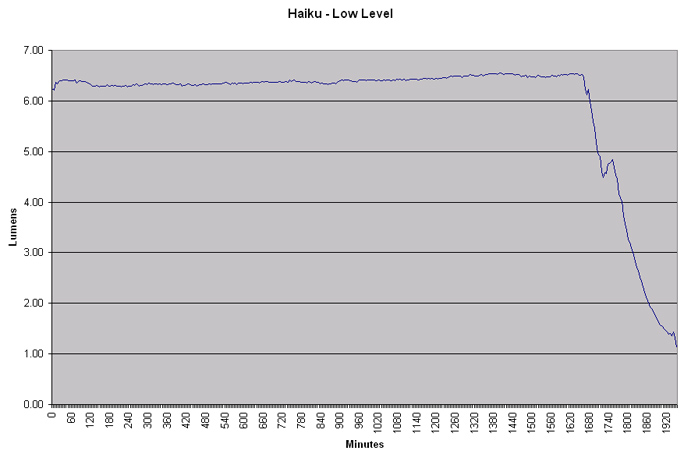
I should point out that I believe the jagged curve on the medium level is probably due to the sampling of light taken every 30 seconds for the log and the fact that the 3S converter reduces the output on medium and low by virtue of PWM with the light pulsing on and off.
I do not think the Haiku should be used for long durations on high and especially if it is not held in the hand for thermal relief. I did to a thermal test leaving the light on high and unattended:
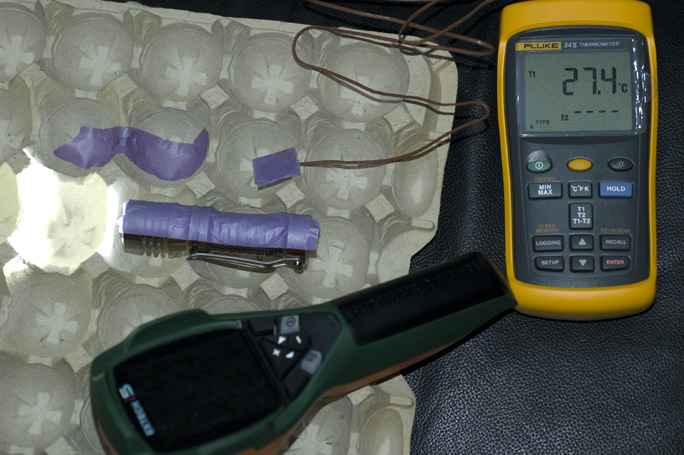
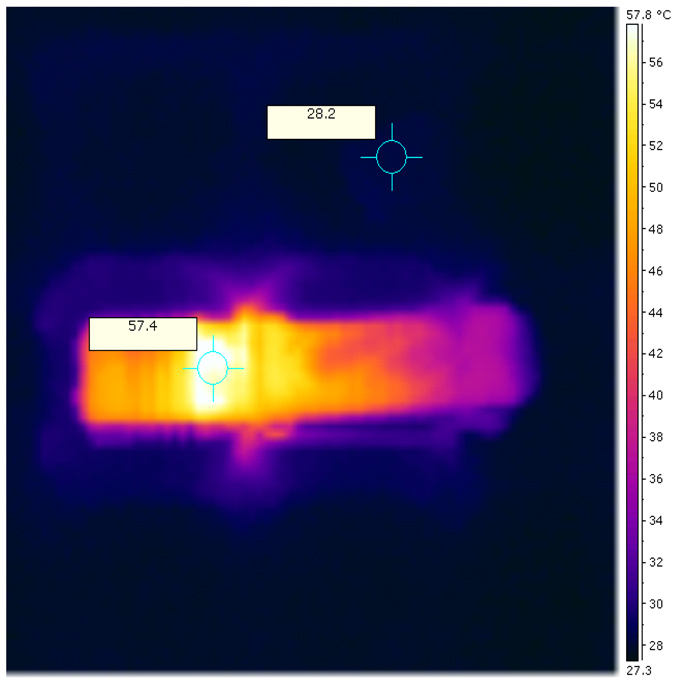
It appears that the light can handle constant on in high but that is not the intention of its design or expected usage.
The McR-17XR reflector selected for the Haiku has an exit diameter small enough, relative to the opening in the head, to allow most of the light out of the front end. The window seal O-ring and then the window retaining O-ring and inside diameter of the head are such to allow the direct spill of light from the LED access to the outside and not be restricted or reflected off by virtue of contact. In the image below, you can see how the O-rings and lip of the head all step out in diameter and away from the exit angle of the reflector itself.
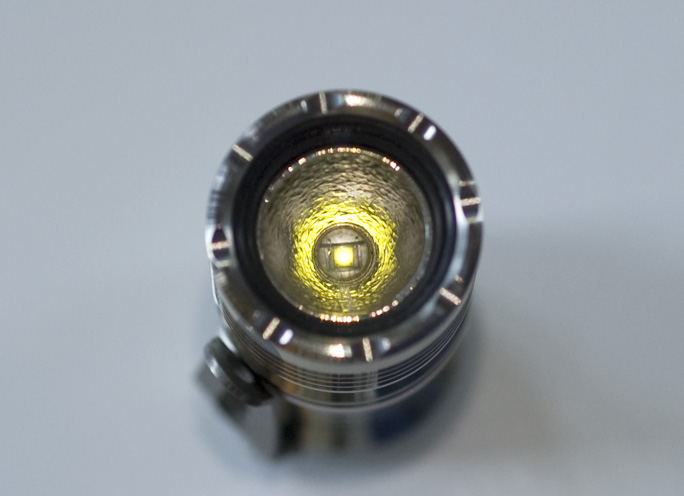
I don't consider the Haiku a dive light but like all of my Ti lights, the design is such that provided seals are in good shape and there is no dirt or crap to compromise them or their surfaces, the light should be more than up to environments that are less than ideal or dry.
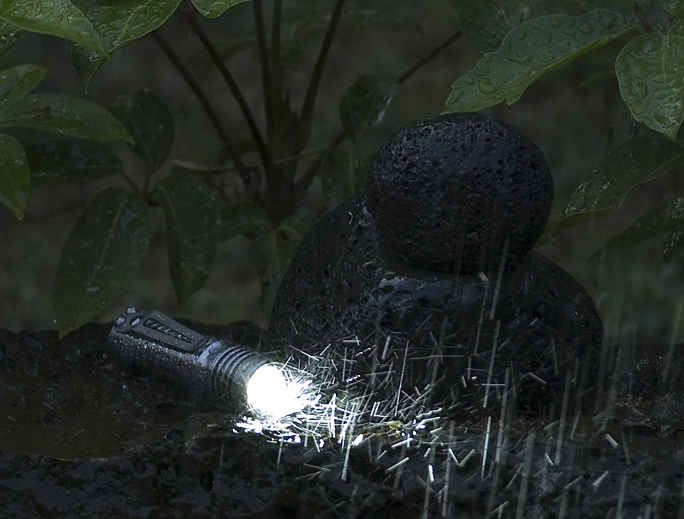
I wanted to make this post reasonably comprehensive and so I figured a beam comparison would need to be included. I chose to compare the Haiku with a Ti PD-S (P4 V0).
Below, is a comparison matrix of all levels shot at the same manual setting on the camera. There was a moon above but the clouds diminished the ambient light for the most part to inconsequential. You can see the cloudy sky in each image and it attests to the same exposure in all images:
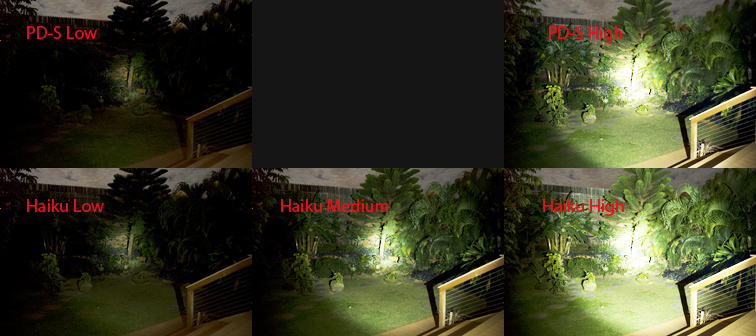
A more detailed beam comparison between the Haiku and PD-S on high:
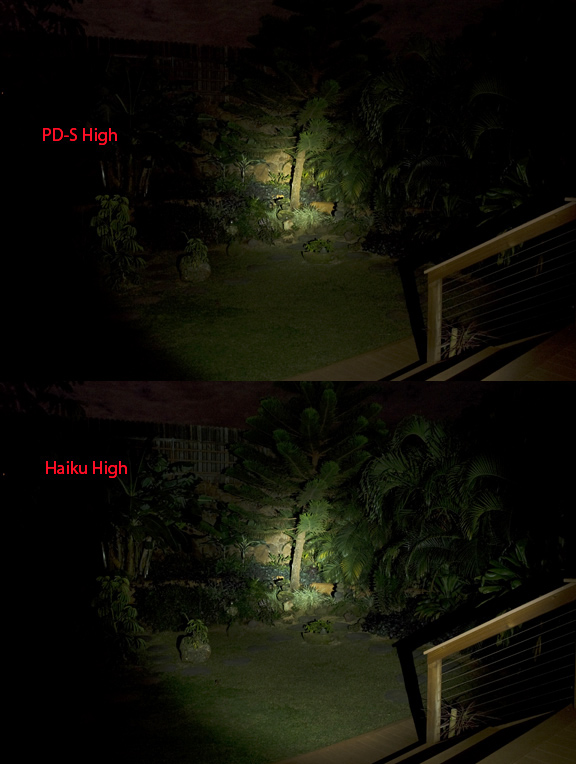
The Haiku is 3 5/8" (9.2 cm) long.
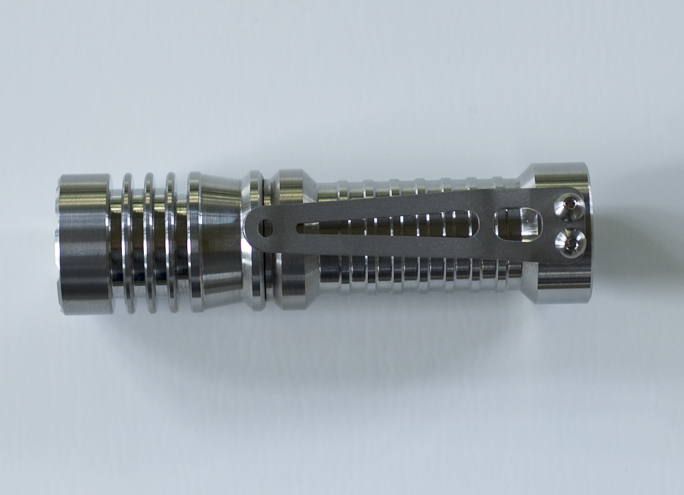
As I mentioned above, these are past the vapor stage and depending on whale visiting conditions, there will be a wave of these sometime next week.
For a number of reasons I have elected to stay clear of discussing lights in the works. There is no telling how or when the vapor will actually materialize.
I have a new light that I have been working on for a good number of months now and it is past the vapor state.
I have been given some deserved flak about the naming of my various lights and it sure gets confusing for everyone, especially me.
This new light has a simple and hopefully unique (for flashlights) name. It's called the Haiku. I wanted a name that somehow alluded to the three levels and I also wanted to give recognition to the Japanese designer of the 3 speed converter which is at the heart of this light. The English version of Haiku is a three line poem that is quite limited in words and yet hopefully accomplishes that which it sets out to illuminate.
The Ti Haiku is a simple light with three levels of output and hopefully it provides the illumination required of it.
The Titanium Haiku is a 1 x CR123 powered flashlight. The Light Engine is a "three speed" Buck/Boost converter driving a Cree XR-E LED (Q5WG bin). The three drive levels are approximately 25, 125 & 650 mA to the LED with typical out the front flux (lumens) of 4, 30 & 135 respectively.

The anatomy of the Haiku:

The battery pak of the Haiku is the titanium McClickie pak which many of you are already familiar with:

I have been real happy with the SunDrop 3S and I knew I wanted to use the 3S converter in a more "main stream" beam type flashlight. I personally have a strong preference for the XR reflectors coupled with the Cree XR-E LED's and the Haiku was a rather predictable result in design. I like the PD-S mizer but recognized with a 3 speed converter, I could have a mizer configuration and in addition, a turbo or bright mode on top. I think the dynamic range of the three levels is better suited to the XR reflector than the McR-20S coupled with a Seoul LED.
I did some runtime tests on a production sample Haiku:



I should point out that I believe the jagged curve on the medium level is probably due to the sampling of light taken every 30 seconds for the log and the fact that the 3S converter reduces the output on medium and low by virtue of PWM with the light pulsing on and off.
I do not think the Haiku should be used for long durations on high and especially if it is not held in the hand for thermal relief. I did to a thermal test leaving the light on high and unattended:


It appears that the light can handle constant on in high but that is not the intention of its design or expected usage.
The McR-17XR reflector selected for the Haiku has an exit diameter small enough, relative to the opening in the head, to allow most of the light out of the front end. The window seal O-ring and then the window retaining O-ring and inside diameter of the head are such to allow the direct spill of light from the LED access to the outside and not be restricted or reflected off by virtue of contact. In the image below, you can see how the O-rings and lip of the head all step out in diameter and away from the exit angle of the reflector itself.

I don't consider the Haiku a dive light but like all of my Ti lights, the design is such that provided seals are in good shape and there is no dirt or crap to compromise them or their surfaces, the light should be more than up to environments that are less than ideal or dry.

I wanted to make this post reasonably comprehensive and so I figured a beam comparison would need to be included. I chose to compare the Haiku with a Ti PD-S (P4 V0).
Below, is a comparison matrix of all levels shot at the same manual setting on the camera. There was a moon above but the clouds diminished the ambient light for the most part to inconsequential. You can see the cloudy sky in each image and it attests to the same exposure in all images:

A more detailed beam comparison between the Haiku and PD-S on high:

The Haiku is 3 5/8" (9.2 cm) long.

As I mentioned above, these are past the vapor stage and depending on whale visiting conditions, there will be a wave of these sometime next week.
Last edited:
